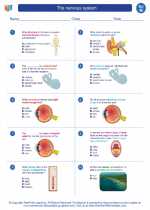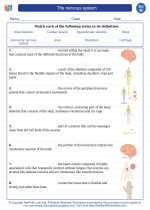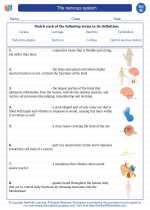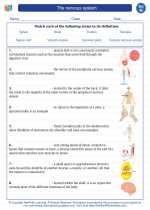Inflammation
Inflammation is a natural response of the body to injury or infection. It is a complex process involving various cells and molecules in the body's immune system. The purpose of inflammation is to protect the body and to initiate the healing process.
Causes of Inflammation
Inflammation can be triggered by a variety of factors, including:
- Infection: When the body is invaded by pathogens such as bacteria, viruses, or fungi, the immune system responds by triggering inflammation to fight off the infection.
- Injury: Physical trauma, such as cuts, burns, or other forms of tissue damage, can lead to inflammation as the body attempts to repair the affected area.
- Autoimmune disorders: In conditions such as rheumatoid arthritis or lupus, the immune system mistakenly attacks the body's own tissues, leading to chronic inflammation.
- Chronic diseases: Conditions like obesity, diabetes, and heart disease are associated with low-grade, systemic inflammation that can contribute to the progression of these diseases.
Key Players in the Inflammatory Response
Several key players are involved in the inflammatory response, including:
- White blood cells (leukocytes): These cells are the primary responders to inflammation. Neutrophils, monocytes, and macrophages are key types of white blood cells involved in the process.
- Cytokines: These signaling molecules are released by various cells to regulate the immune response and promote inflammation.
- Chemokines: These molecules help attract immune cells to the site of inflammation.
- Prostaglandins: Lipid compounds that play a role in promoting inflammation and pain.
Stages of Inflammation
The inflammatory response typically progresses through several stages:
- Vasodilation and increased permeability: Blood vessels in the affected area dilate, allowing more blood to flow to the site of injury or infection. This increased blood flow leads to redness and warmth, and the vessels become more permeable, allowing immune cells and molecules to enter the tissue.
- Migration of white blood cells: White blood cells, particularly neutrophils, migrate to the site of inflammation to help combat the invading pathogens and remove debris from the injured tissue.
- Tissue repair and resolution: Once the threat has been neutralized, the body initiates the process of tissue repair and resolution, with the help of macrophages and other cells that clear away cellular debris and promote healing.
Study Guide for Inflammation
To understand inflammation, it is important to study the following topics:
- Definition and causes of inflammation
- Cellular and molecular players involved in inflammation
- Stages of the inflammatory response
- Role of inflammation in various diseases and conditions
- Importance of inflammation for the body's defense and healing mechanisms
Understanding inflammation is crucial for understanding the body's immune response and the development of various diseases. It is also important in the context of developing therapeutic interventions to modulate the inflammatory response in various conditions.
.◂Science Worksheets and Study Guides Eighth Grade. The nervous system

 Worksheet/Answer key
Worksheet/Answer key
 Worksheet/Answer key
Worksheet/Answer key
 Worksheet/Answer key
Worksheet/Answer key
 Vocabulary/Answer key
Vocabulary/Answer key
 Vocabulary/Answer key
Vocabulary/Answer key
 Vocabulary/Answer key
Vocabulary/Answer key
 Vocabulary/Answer key
Vocabulary/Answer key
 Vocabulary/Answer key
Vocabulary/Answer key
 Vocabulary/Answer key
Vocabulary/Answer key
